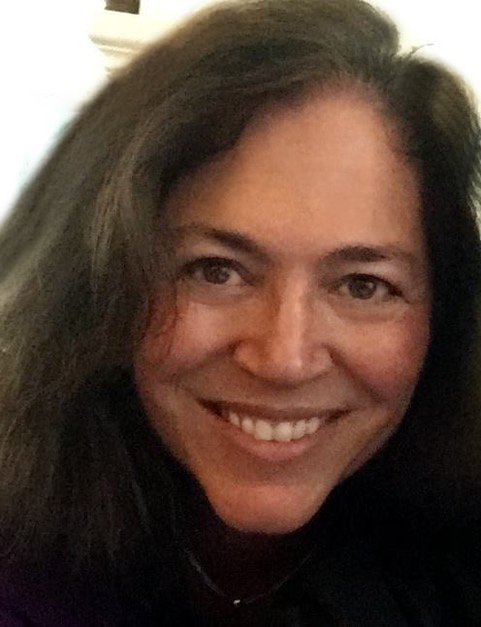By Nicole Wakeland
After three dormant years, the social media storytelling project “Humans of UCSB” has just been revived and relaunched under the Writing Program, creating a platform for UC Santa Barbara students, staff, faculty and alumni to share their personal stories.
Third-year student Jennifer Yoshikoshi serves as the Student Coordinator for “Humans of UCSB,” a social media project that shares original stories from individuals across campus. Photo by Daniel Huecias.
Modeled on “Humans of New York,” a vibrant blog which provides a worldwide audience with daily glimpses into the lives of strangers in the streets of New York City, this project aims to do the same by showcasing the lives of people we may not notice walking on campus.
In 2014, a student first began “Humans of UCSB” on Facebook to highlight members of the UCSB community. Within five years, more than 7,000 people followed that page. Eventually, momentum died down as successive Facebook and Instagram student administrators graduated. There were no new posts between April, 2019 and last month, when the Writing Program gave the project a home.
“This project has a simple premise, and feels like the purest form of journalism,” says faculty adviser, Nomi Morris, a lecturer in the Writing Program. “It’s an unexpected way to connect with each other.”
“Humans of UCSB” can be found on Instagram, Twitter and Facebook (@humansofucsb). Each post includes a photograph of a community member and a 200 to 400-word caption, written in the first person voice—making it a raw, authentic and liberating platform.
Student Coordinator Jennifer Yoshikoshi became interested after connecting with Shari Ross Altarac, a former UCSB instructor who did a certificate in social impact storytelling at Georgetown University. Altarac made contact with the students who began “Humans of UCSB” and incorporated the concept as a class assignment in her Writing composition course.
Yoshikoshi was already a student journalist and was working at KCSB Radio news when Altarac introduced her to Morris and the two set about getting the pages up and running by the beginning of spring term.
Nomi Morris, faculty adviser and lecturer in UCSB’s Writing Program, hopes to see the social media project “Humans of UCSB,” incorporated into various courses at the university.
Morris has reached out to Writing Program colleagues to incorporate the project into lower-division composition courses and upper-division journalism courses. And Yoshikoshi is spreading the word among student groups. Student photojournalists are also planning to do spontaneous interviews with passersby on campus.
Now that Yoshikoshi has been involved with the revival of “Humans of UCSB,” she anticipates students and others will see it as a very open and welcoming space for people to tell their stories no matter how timid they may be about telling them.
“By sharing unique stories, struggles or memories that help shape the people in this community, we really hope to inspire others,” says Yoshikoshi. “We hope to share information that goes a little bit deeper.”
Already, last month the site featured stories about a student who loves hiking as a way to relieve stress, and another who shared reflections about how influential her sister has been in her life.
Morris and Yoshikoshi say this online space differs from other social media and web-based media on campus, because the project transcends any particular department, club, or agenda, encouraging anybody and everybody in the community to get involved. You don’t have to be a student journalist or involved with the Writing Program in any way, you just need to be willing to tell your story.
“This project captures a slice of life, a moment in time, and a glimpse into the human condition,” says Morris, who also directs the journalism track in the Professional Writing Minor. “After the period of isolation we all endured due to COVID-19, we are seeking to connect with one another, and this really hits the spot.”
Eyal Wrobel's story story about his cultural heritage and family history was one of the first featured on the "Humans of UCSB" social media pages, after a three-year hiatus.
Eyal Wrobel was among the first UCSB students to be featured after the relaunch of “Humans of UCSB.” Wrobel’s profile, layered with anecdotes of his family and their origins in France, speaks to his identity and cultural background.
“I participated in this project because I think it is a great way to get to know other student stories,” says Wrobel. “Having spent most of my college life in a remote environment, I also think it is important to find a way to interact with my community.”
He felt an extreme sense of pride after seeing his story come to life, and he hopes “Humans of UCSB” will grow bigger as a part of campus life.
Members of the UCSB community can get involved with the project by visiting any of the “Humans of UCSB” social media accounts, or by submitting first-person stories to humansofucsb@gmail.com. Submissions should be 200 to 400 words and have two to three photographs attached. Be sure to include your real name, major, and year.
“Storytelling is key to the human condition,” says faculty adviser Morris. “Things like this bring meaning to our lives.”
Nicole Wakeland is graduating this spring with a major in Communication and a minor in Professional Writing. She is the Social Media Intern for the Writing Program.




